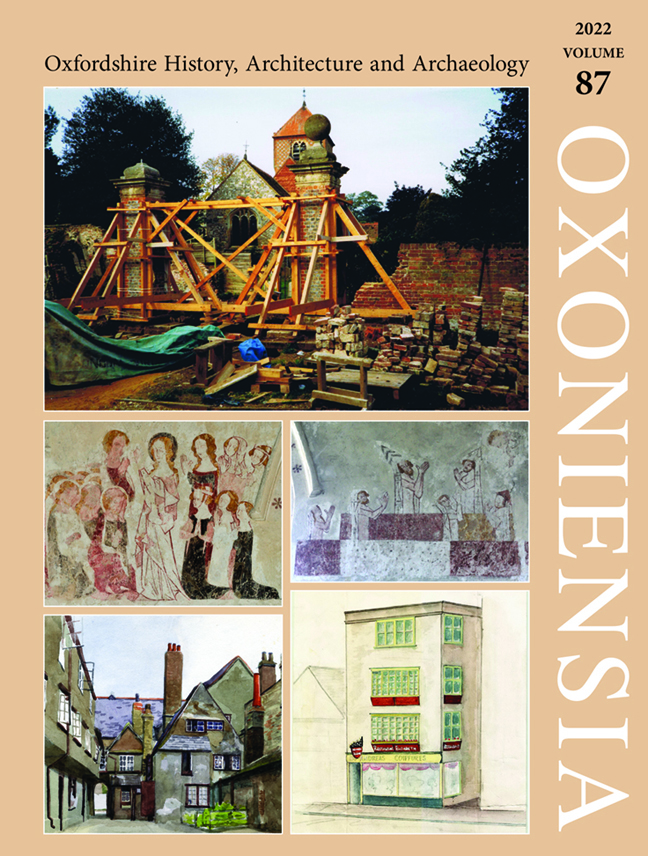Middle Iron Age Settlement and Roman Agricultural Activity East of Chalgrove
Published online by Cambridge University Press: 17 February 2024
Summary
SUMMARY
Three excavation areas were investigated at the east end of the village of Chalgrove in south Oxfordshire. A middle Iron Age settlement comprising a sequence of roundhouse gullies and one or more posthole structures of uncertain form was uncovered in the northern Area A, as well as two curvilinear enclosures closer to the Chalgrove Brook in Area B. Area C revealed a pair of converging trackways adjoined by rectilinear enclosures, which were constructed during the second half of the first century AD and passed out of use early in the second century. The principal feature in Area B was part of a rectilinear enclosure that was attributed to the late Roman period, but not enough of the enclosure was exposed within the development area to establish the character of any internal activity. Nevertheless, the feature may provide a context for the late Roman copper alloy ‘Irchester Bowl’ that had been found in 2011 by a metal detectorist at a location that was not precisely recorded but may lie within the enclosure. The date range of pottery from the enclosure would also allow it to be contemporary with the two third-century coin hoards for which Chalgrove is noted.
Oxford Archaeology (OA) undertook an excavation in advance of a proposed residential development at the south-east end of the village of Chalgrove. The village lies toward the southeastern limit of the clay vale that extends between Oxford and the Chiltern escarpment, and the site comprised a single large, rectangular field adjoining the end of the village at NGR SU 6429 9663, which had formerly been used for arable farming (Fig. 1). The field slopes slightly from north-east to south-west, from 75 m to 70 m above Ordnance Datum, toward the Chalgrove Brook, which is located c.100 m to the south and flows north-west toward a confluence with the River Thame at Stadhampton. The underlying geology is mapped as Gault Formation mudstone, which is overlain in the northern part of the field by a superficial deposit of Summertown-Radley sand and gravel, and at the south-western edge the Chalgrove Brook is associated with alluvial deposits of clay, silt, sand and gravel. The work was commissioned by CgMs Heritage (now RPS) on behalf of Miller Homes and was undertaken as a condition of planning permission for the development.
- Type
- Chapter
- Information
- Oxoniensia , pp. 325 - 354Publisher: Boydell & BrewerPrint publication year: 2022

